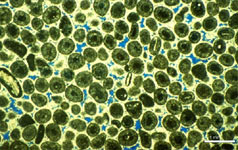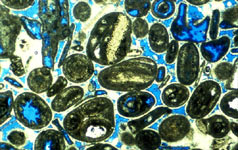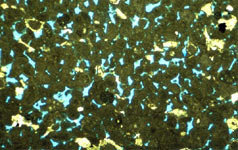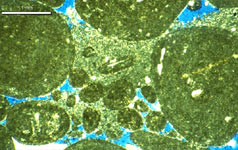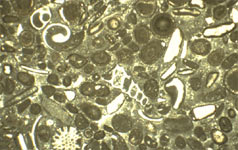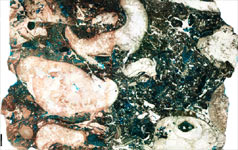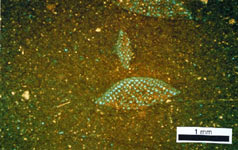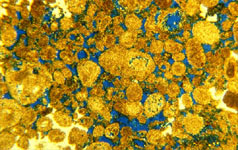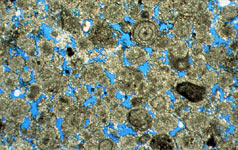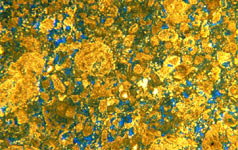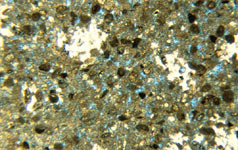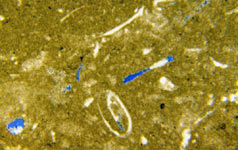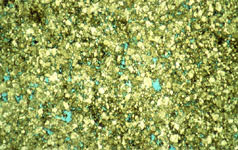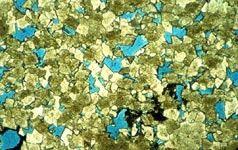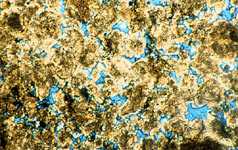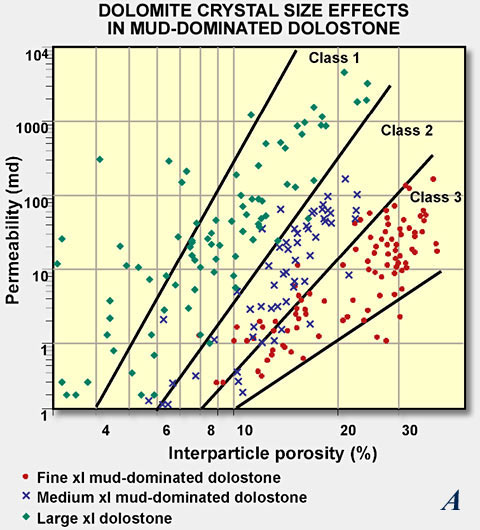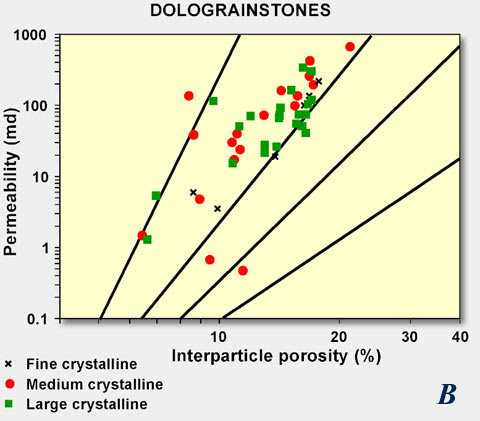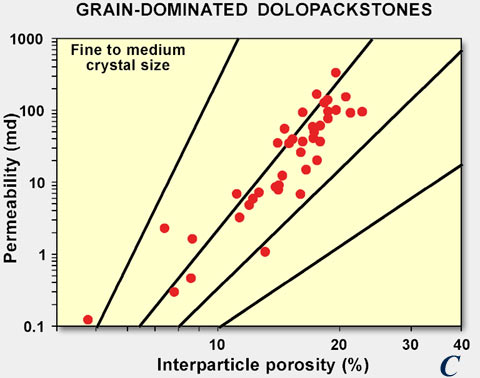
Estimating Permeability in Carbonates Using the Rock-Fabric Method
F. Jerry Lucia
Bureau of Economic Geology
| Design Objectives |
| Glossary |
| Credits |
| Back |
| Top |
| Exit |
 |
 |
 |
|
Rock-Fabric/Petrophysical Relationships Petrophysics of Interparticle Pore Space Limestone Rock Fabrics Examples of
nonvuggy limestone
petrophysical rock
fabrics are illustrated in Fig. 7. In grainstone
fabrics, the pore-size distribution is controlled by grain size;
in mud-dominated
fabrics, the size of the micrite particles controls the pore-size
distribution. In grain-dominated
packstones, however, the pore size distribution is controlled
by grain size and by the size of micrite particles between grains.
Figure 8 illustrates all the data for limestones compared with the
permeability
fields. Grainstone and mud-dominated fabrics are reasonably well-constrained
permeability fields. Although grain-dominated packstone fabrics
plot at an intermediate location between grainstones and mud-dominated
limestones, they show more variability because of the large grain
size difference. Grain size of grain-dominated packstone ranges
from 400 microns for oncoid fabrics to 80-150
Despite the considerable scatter in the data, grainstone, grain-dominated packstone, and mud-dominated fabrics are reasonably well constrained to the three permeability fields. Whereas grain size and sorting define the permeability fields, the interparticle porosity defines pore-size distribution and thus the permeability within the field. Systematic changes in intergrain porosity by cementation, compaction, and dissolution processes will produce systematic changes in pore-size distribution and result in systematic changes in permeability. Therefore, permeability in nonvuggy limestones is a function of interparticle porosity, grain size, and sorting.
Dolostone Rock Fabrics Examples of nonvuggy dolostone petrophysical rock fabrics are illustrated in figure 9. Dolomitization can change the rock fabric significantly. In limestones, fabrics can usually be distinguished with little difficulty. If the rock has been dolomitized, however, the overprint of dolomite crystals often obscures the limestone fabric precursor. Precursor fabrics in fine-crystalline dolostones are easily recognizable. However, as the crystal size increases, the precursor fabrics become progressively more difficult to determine.
Dolomite crystals
(defined as particles in this classification) commonly range in
size from several m to >200
Grainstones
are usually composed of grains much larger than the dolomite crystal
size (Fig. 9) so that dolomitization
does not have a significant effect on the pore size distribution.
This principle is illustrated in Fig. 10b
where interparticle porosity
is plotted against permeability
measurements from dolograinstones.
The grain size of the dolograinstones is 200 A cross plot
of interparticle porosity and permeability measurements from fine
to medium crystalline grain-dominated
dolopackstones is presented in Fig. 10c.
The average grain size is 200 Figure 11 illustrates
all dolomite data compared with permeability
fields. Dolograinstones
and large crystal dolostones
constitute the class 1 permeability
field. Grains are very difficult to recognize in dolostones with
a > 100
The dolomite permeability fields are defined by dolomite crystal size as well as grain size and sorting of the precursor limestone. Within the field, permeability is defined by interparticle porosity. Systematic changes in intergrain and intercrystal porosity by predolomite calcite cementation, dolomite cementation, and compaction will systematically change the pore-size distribution, resulting in a systematic change in permeability. Therefore, dolomite crystal size, grain size, and sorting define the permeability field, and interparticle porosity defines the permeability.
Limestone and Dolostone Combined Data from limestone
and dolostone
rock fabrics
are combined into one interparticle-porosity permeability
cross plot in figure 12. The fabrics that make up the class 1 field
are (1) limestone and dolomitized
grainstones and (2) large crystalline grain-dominated
dolopackstones and mud-dominated dolostones. An upper particle
size limit of 500
Transforms are presented below for each combined permeability field (Fig. 12).
|
||||||||||||||||||||||||||||||
